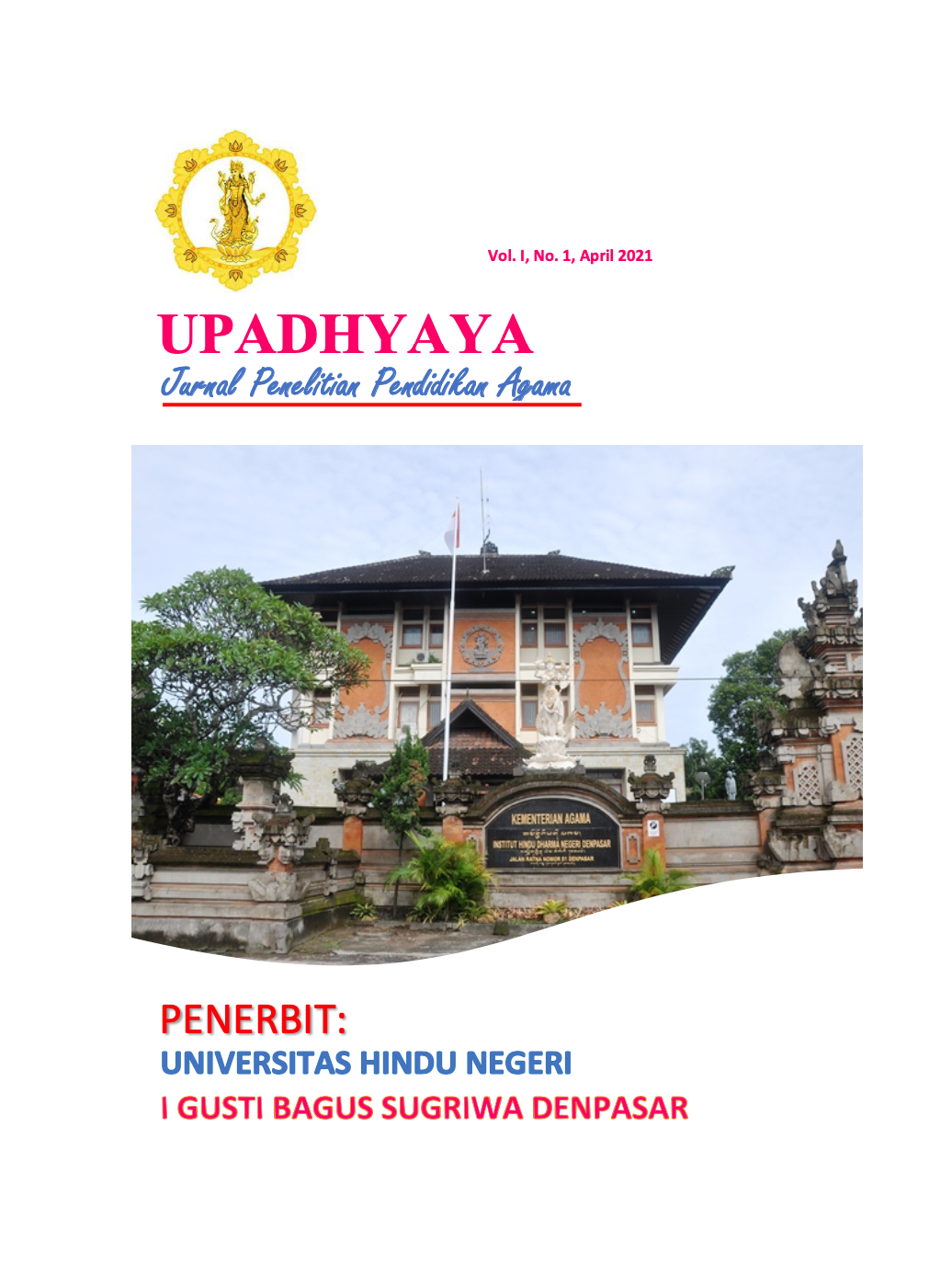INTERPRETASI PENDIDIKAN AGAMA HINDU BERBASIS ESTETIKA DALAM PEMENTASAN TARI REJANG PERMAS PADA UPACARA DEWA YAJNYA DI PURA SAMUAN TIGA DESA PAKRAMAN BEDULU KECAMATAN BLAHBATUH KABUPATEN GIANYAR
DOI:
https://doi.org/10.25078/up.v1i1.487Keywords:
Hindu Religious Education, Aesthetics, Rejang Permas Dance, Dewa Yajna CeremonyAbstract
Bali has a wide variety of cultural heritage with its own uniqueness and distinctiveness. One of the cultural heritage of Bali in the past is the Samuan Tiga temple. This temple is located in Bedulu Village, Blahbatuh Subdistrict, Gianyar Regency. In the implementation of piodalan ceremony at Pura Samuan Tiga, a unique and distinctive ritual dance (wali) is performed by the local community called Rejang Permas Dance. The issues that will be discussed include: 1) What is the religious motive and the condition of the cause in the staging of Rejang Permas Dance?, 2) How is the religious system of Dewa Yajna ceremony in the staging of Rejang Permas Dance?, 3) What is the meaning of Aesthetic-based Hindu Religious Education in the staging of Rejang Permas Dance?. In general, what is to be achieved, is to preserve Balinese culture, especially Rejang Permas Dance. In particular, it has a purpose: (1) To explain religious motives and causal conditions in the staging of Rejang Permas Dance, (2) To describe the religious system of Dewa Yajna ceremony in the staging of Rejang Permas Dance, (3) To explore the meaning of Aesthetic-based Hindu Religious Education in the staging of Rejang Permas Dance. The theories used to dissect the above problems are: Deconstruction, Religion and Aesthetics Theory. The type of research used is qualitative descriptive. The type of research approach used is the educational approach. The data sources used are primary and secondary data sources. Data collection is done using techniques: Observation, interview, documentation and literature. Data is analyzed based on qualitative descriptive analysis with descriptive data analysis measures and interpretive data analysis. Qualitative data validation techniques are triangulation techniques and expert opinion. Religious motives and causal conditions in the staging of Rejang Permas Dance consists of: 1) Religious Motifs include Dancers, , movement, property, accompaniment of gamelan, 2) Condition of cause includes Rejang Permas dance as sacred dance, Rejang Permas dance as a complement to the ceremony.The religious system of Dewa Yajna ceremony in the performance of Rejang Permas dance is: Preparation of Rejang Permas dance performance, Implementation of Rejang Permas dance performance, Final activity of Rejang Permas dance performance. The meaning of Aesthetic-based Hindu Religious Education in the staging of Rejang Permas Dance includes: Motion, Makeup and Fashion, Property, Offerings or Banten.





